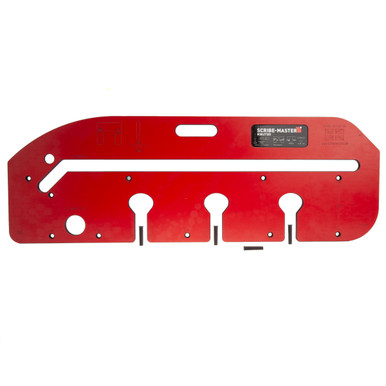How to use a Worktop Jig
Posted by Katy | Toolstop on 15th Feb 2024
Master the art of worktop joins with Scribemaster jigs! Conquer masons mitres, achieve pro-looking results, and ditch the guesswork. This guide covers everything you need to know, from what a worktop jig is to using the KWJ720 step-by-step.
What is a Worktop Jig?
A worktop jig is a specialised tool designed to aid in joining and cutting the masons mitre joint on kitchen worktops with precision and accuracy. They ensure precise cuts and consistent joints, eliminating the risk of errors and frustration.
Why Use a Worktop Jig?
There’s no other easy way to join worktops.
Accuracy, efficiency, and professional-looking results - that's the magic trio a worktop jig delivers. Say goodbye to guesswork, wobbly lines, uneven cuts, and wasted materials. With a jig, you get clean, secure joints every time, saving you time and money.
How to join worktops with a jig
Now that we understand the importance of a worktop jig, let's delve into the step-by-step process of using one to join worktops seamlessly. We will be using the Scribemaster KWJ720. Their jigs incorporate the Sight Line technology patent (number tbc), allowing you to make all measurements from the front edge. Video to follow.
Ready to get started? Let's break it down step-by-step:
1. Choose your Scribemaster jig: Scribemaster offers a range of worktop jigs. Select the one that best suits your project. (For this demo, we’re using the KWJ720). View all models.
2. Prepare your workspace: Ensure your worktops are clean, level, and securely supported. Gather your tools, including the jig, a router, router bits, clamps, and safety gear.
3. Locate the Mason's Mitre meeting point: Identify where the front of your masons mitre joint meets, marking the corner of your desired workpiece.
4. Set the Corner Dimension Line: Using a square (ensure its accuracy), set the corner dimension line. Depending on your chosen inset depth, align with the appropriate line in the Sight Line window (options range from 35mm to 3mm). The beauty of Sight Line lies in its lightning-fast and precise setup. See it below:
5. Cut the joint: Clamp the jig firmly to your worktop. Choose the appropriate router bit, guide bush, and/or cam size for your desired joint. Carefully route the joint, holding the router against the opposite edge. Remember to plunge in 10mm drops, finishing with a final push against the actual edge for a smooth, clean cut.
6. Create bolt holes: Align the jig to your desired bolt hole positions and route them for secure connections.
7. Routing hinge holes (optional): Use the jig's 3/4" BSP template to effortlessly route perfect 35mm hinge holes for your cabinet doors.
8. Trim worktop ends (optional): Utilise the M90 holes at the opposite end of the jig to achieve precise 90-degree cuts on your worktop ends
Remember: Safety first! Always wear appropriate PPE and follow the manufacturer's instructions carefully.
from Scribemaster runs us through the KWJ720:
Mastering the art of woodworking requires precision, skill, and the right tools. Scribemaster's worktop jigs, equipped with innovative Sight Line technology, offer woodworkers of all levels the ability to achieve professional-quality results with ease. By following the simple steps outlined above, even beginners can harness the power of a worktop jig to create flawless joints and elevate their woodworking projects to new heights.
Remember, practice makes perfect. Find out more about Scribemaster, the UK’s number one name in Woodworking Jigs in our blog.









